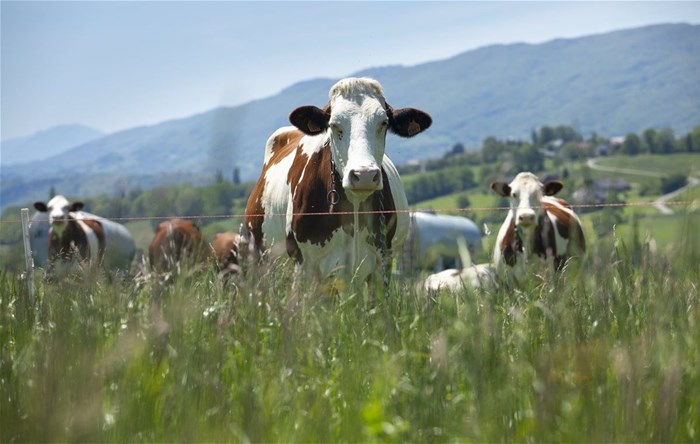Although it's not harmful to humans, foot-and-mouth disease causes mouth ulcers and foot lesions in hoofed animals such as cattle, goats and camels, making them lame.
The disease can spread very fast because it’s highly contagious. The only way to prevent the spread is to restrict the movement of animals and to prevent infected animals from having any contact with others.
Foot-and-mouth disease occurs in over 100 countries worldwide, mainly in Africa, Asia, the Middle East and South America. Over the past two years, there have been outbreaks in Mongolia, Russia, India, Israel, Ethiopia, Kenya, South Africa and Zimbabwe. In 2013, India had the worst outbreak in a decade, with over 64,000 infected animals and 6,100 deaths. The main cause of the spread was because animal movements weren’t being effectively monitored.
To curb the spread, countries will restrict the movement of livestock. But this can be a huge blow to the economy. South Africa, for instance, produces around USD$145m worth of exports in red meat annually. Agriculture contributed R72.2bn (about USD$5bn) to the country’s GDP in 2015. Outbreaks will also affect Namibia, Botswana and eSwatini, who rely on South African meat imports.
There is another, less economically damaging way of controlling foot and mouth disease: the use of traceability systems. These have been used effectively in Namibia to map out which areas need to be quarantined and manage the movement of livestock. The system tracks animal movement, identifies all animals uniquely, monitors animal health, assists in disease control and manages feed. Because it’s so efficient, traceability is now a requirement to export meat to the EU and America.
In Southern Africa, Namibia, eSwatini and Botswana already use national livestock traceability systems – but South Africa doesn’t currently have a system in place.
Namibia’s outbreak
In 2015, there was an outbreak of foot and mouth disease in the north of Namibia. It was the worst case in 40 years. The outbreak spread to over three regions in less than five months. A total of 14 regions in the Northern Communal Areas reported FMD cases from January to June 2015. It eventually cost N$180m (about US$13m) to control.
But Namibia was actually able to contain the spread fairly well, and to ensure the outbreak was eradicated within a year of the first case being reported. FMD outbreaks typically last much longer. The country was finally declared free of the disease in January 2016.
A major factor in Namibia’s success was that it had a fully functional traceability system, known as the Namibian Livestock Identification and Traceability System in place. This system was able to identify the affected areas using Google Maps which enable officials to identify the focal point of the disease; in other words, where it was first identified. This area was then quarantined. The next step was to quarantine the animals’ shared food and water resources with infected animals.
This electronic countrywide system enabled officials to determine where animals were coming into contact with other animals and to impose quarantine the affected areas.
If the disease showed signs of spreading further, the quarantine area was expanded.
The traceability system can also be used to manage the movement of animals. This is key to preventing the spread of foot and mouth disease. Tracking needs to be done between different farms, the farms and auction areas as well as between the farms and abattoirs.
It’s a complex process that’s made easier with the use of an electronically-based system – but only if all the necessary data has been uploaded.
All of this information is captured in the traceability database, which includes adherence to the 90/40 day rule that an animal cannot be slaughtered within 90 days after entering the country, or 40 days since its last move from farm-to-farm, farm-to-auction or farm-to-abattoir. This ensures that animals are disease-free before they are moved.
In addition to all of this, all vehicles entering the affected area, must be sprayed and passengers need to rub their feet on a treated blanket to prevent further spread of the disease.
As Namibia’s fairly recent experience shows, a national traceability system would make a big difference in allowing the country to track and manage the disease. This could save animals’ lives and help get this crucial part of the agricultural economy moving again.
This article is republished from The Conversation under a Creative Commons license. Read the original article.


























